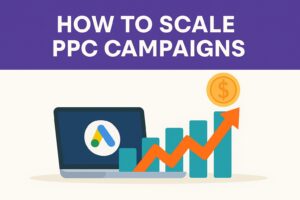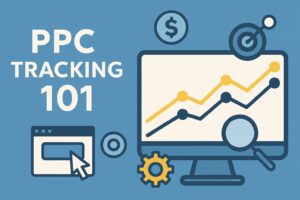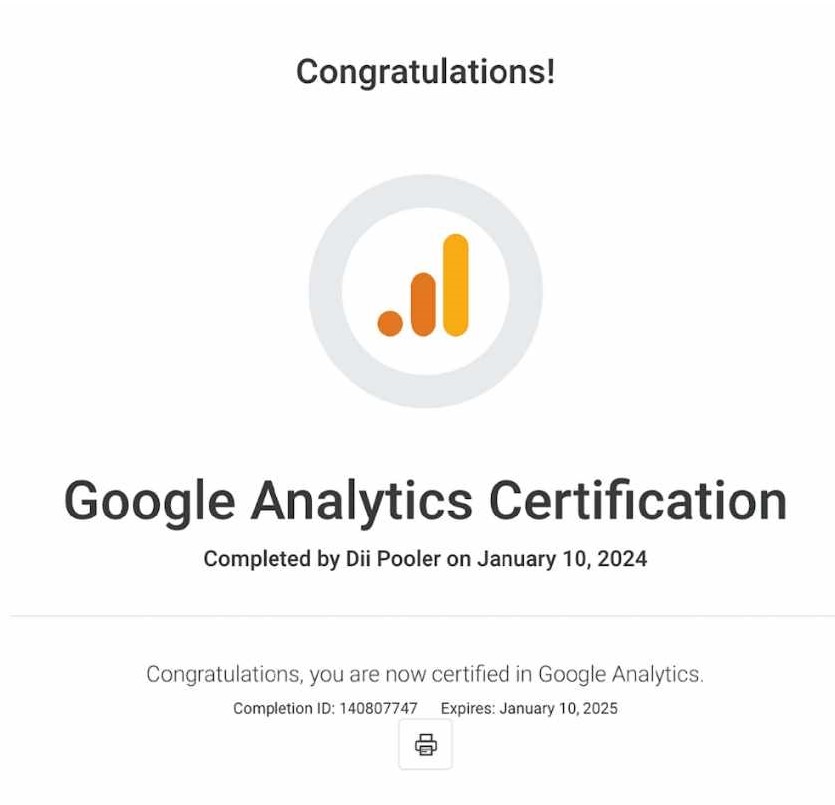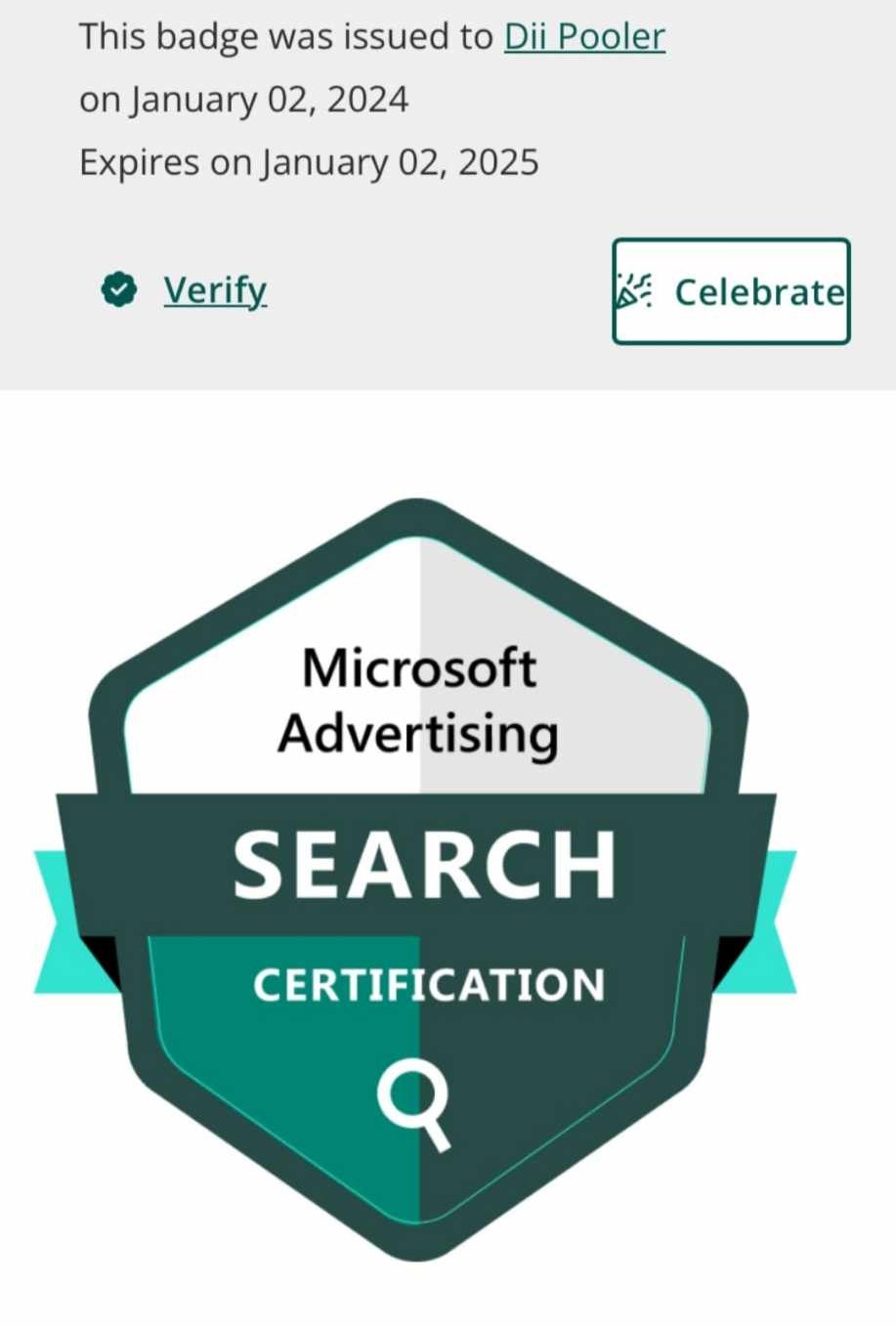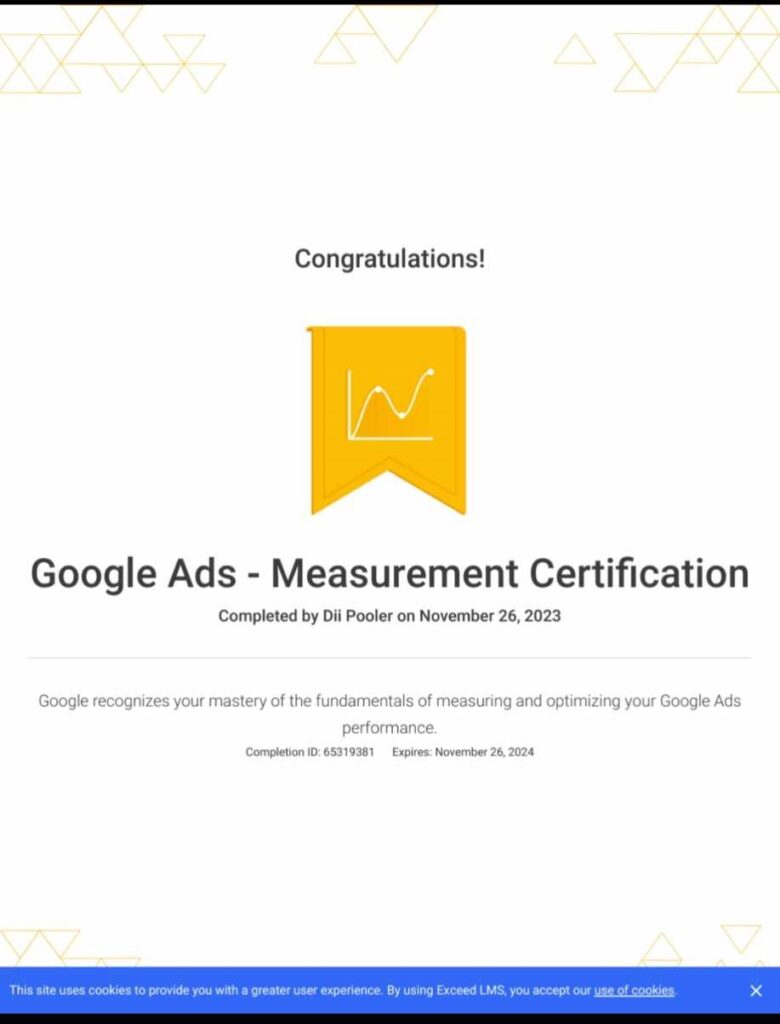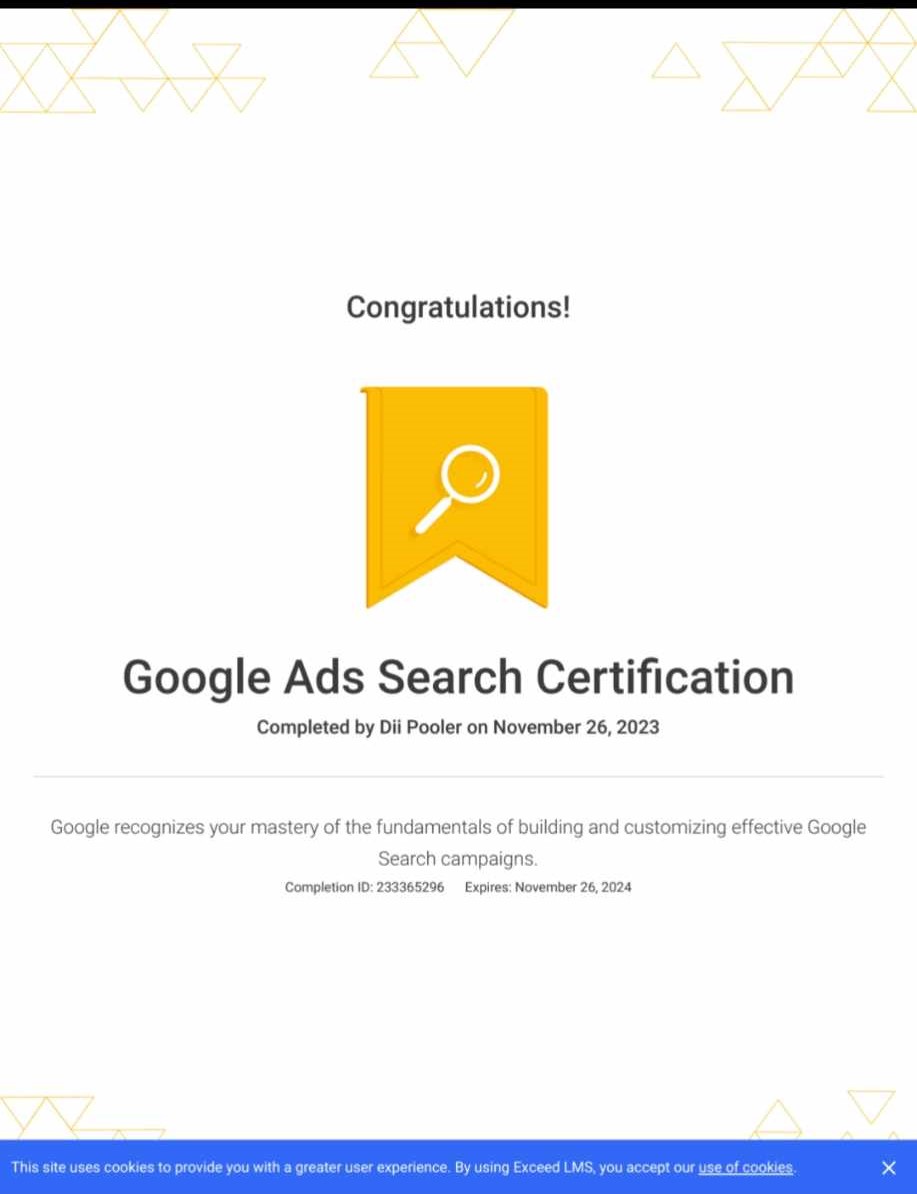How to Scale PPC Campaigns
Scaling PPC campaigns sounds simple in theory—just add more budget and watch the leads roll in, right? Wrong. I’ve seen countless businesses burn through their marketing budgets trying to scale campaigns by simply throwing more money at them. The result? Higher costs, lower quality traffic, and frustrated marketing teams wondering where their ROI went.
The truth about scaling PPC campaigns is that it requires a strategic, systematic approach. Increasing budgets too aggressively can cause Smart Bidding to overcompensate, leading to inefficient scaling and missed revenue opportunities. This guide will show you how to scale your PPC campaigns properly—the way that actually maintains performance while growing your results.
When You Should (and Shouldn't) Scale Your Campaigns
Before diving into how to scale, you need to know when it’s the right time. Scaling at the wrong time is like pressing the gas pedal before you’ve figured out how to steer.
Signs It’s Time to Scale
Strong Performance Metrics: Your campaigns should have proven themselves first. If you’re hitting conversion goals consistently, increase the budget by 15% per week while monitoring conversion trends.
Quality Score Above 7: This indicates your keywords, ads, and landing pages are relevant and performing well. If you’ve managed to maintain high Quality Scores, you’ve likely optimized the fundamentals.
Healthy Cost Per Acquisition: Your CPA should be within acceptable limits for your business model. If you’re paying more to acquire customers than they’re worth, scaling will only amplify the problem.
Impression Share Limitations: Google’s IS rank metric shows you lost visibility based on poor ad rank. If budget constraints are limiting your impression share, scaling could unlock untapped potential.
Strong Click-Through Rates: Industry benchmarks vary, but average CTRs across industries range from 1.35% to 3.4%, with the overall average being 1.91%. If you’re performing at or above these levels, it’s a good indicator for scaling.
Red Flags: When NOT to Scale
High CPA Trends: If your cost per acquisition is increasing month over month, scaling will make this worse.
Poor Landing Page Performance: High bounce rates or low conversion rates indicate fundamental issues that scaling won’t fix.
Limited Conversion Data: Automated bidding strategies need sufficient data to work effectively. Don’t scale campaigns that don’t have enough conversion history.
Recent Major Changes: If you’ve made significant campaign changes in the past 2-3 weeks, wait for performance to stabilize before scaling.
The Framework: Horizontal vs. Vertical Scaling
There are two primary approaches to scaling PPC campaigns, and understanding the difference is crucial for success.
Vertical Scaling: Optimizing What’s Working
What this looks like:
- • Increasing budgets on high-performing campaigns
- • Raising bids on profitable keywords
- • Expanding successful ad groups
- • Adding more budget to proven audiences
Benefits:
- • Lower risk since you’re scaling proven performers
- • Easier to maintain quality and control
- • Leverages existing optimization work
When to use: Start here. Always scale vertically before going horizontal.
Horizontal Scaling: Expanding Your Reach
What this looks like:
- • Launching campaigns for new product lines
- • Targeting new geographic markets
- • Expanding to additional platforms (Bing, YouTube, LinkedIn)
- • Creating campaigns for different audience segments
Benefits:
- • Diversifies your traffic sources
- • Reduces dependency on single campaigns
- • Opens new growth opportunities
When to use: After you’ve maximized vertical scaling opportunities.
Strategic Budget Scaling: The Right Way
Budget scaling is where most people mess up. Here’s how to do it properly:
The Gradual Increase Method
Instead of doubling your budget overnight, gradually increase it by 10-20% daily. This gives Smart Bidding algorithms time to adjust without causing performance drops.
My proven scaling schedule:
- • Week 1: Increase budget by 15%
- • Week 2: If performance holds, increase another 15%
- • Week 3: Continue gradual increases
- • Week 4: Stabilize and analyze performance
Strategic Budget Reallocation
Don’t just increase budgets across the board. Shift budget strategically between branded campaigns (lower-funnel, high-converting), non-branded search campaigns (high-growth potential), and remarketing campaigns (high-value repeat customers).
Budget allocation framework:
- • 60% to proven high-performers
- • 25% to scaling experiments
- • 15% to testing new opportunities
Performance Monitoring During Scaling
As you analyze performance across your campaign, identify any underperforming ad groups where budget might be going to waste. Decrease budgets in these areas and reallocate spend to top-performing assets.
Weekly monitoring checklist:
- • Cost per conversion trends
- • Quality Score changes
- • Impression share metrics
- • Search term report analysis
- • Audience performance breakdown
Keyword Expansion: Quality Over Quantity
Expanding your keyword strategy is essential for scaling, but it needs to be done strategically.
The Smart Approach to Keyword Expansion
When scaling up, adding additional keywords is important, but ensure every additional keyword adds value and can justify its own existence. Simply expanding for the sake of it becomes a liability.
Keyword expansion strategy:
- • Start with search term reports: Look for high-performing search queries that aren’t specifically targeted
- • Analyze competitor keywords: Use tools like SEMrush or SpyFu to find gaps in your strategy
- • Focus on long-tail variations: Long-tail keywords typically have lower competition and higher conversion rates
- • Test systematically: Add new keywords in small batches to measure impact
Long-Tail Keyword Opportunities
Customers who use more descriptive phrases are typically more likely to convert than those who use general terms. A study shows that successful optimization requires at least 50% focus on long-tail keywords.
Long-tail benefits for scaling:
- • Lower competition and costs
- • Higher conversion rates
- • More specific user intent
- • Better Quality Scores
Negative Keyword Management
As you expand keywords, negative keyword management becomes even more critical. Update your negative keyword list to avoid unnecessary ad spend and use your budget efficiently.
Negative keyword strategy:
- • Review search term reports weekly
- • Add irrelevant queries immediately
- • Create shared negative keyword lists
- • Monitor cross-campaign conflicts
Advanced Audience Scaling Strategies
Audience expansion is one of the most effective scaling methods when done correctly.
Audience Layering and Segmentation
Effective audience layers:
- • Demographics + Interests: Age 25-45 + fitness enthusiasts
- • Behavioral + Geographic: Past purchasers + specific locations
- • Custom + Similar: Website visitors + lookalike audiences
Remarketing Campaign Expansion
Remarketing campaigns offer a whopping 900% higher click-through rate, making them excellent scaling opportunities.
Remarketing scaling strategy:
- • Segment by site behavior (product viewers, cart abandoners, past purchasers)
- • Create time-based sequences (1-day, 7-day, 30-day lists)
- • Use different messaging for each segment
- • Test cross-selling to existing customers
Targeting vs. Observation Settings
When to use Targeting:
- • Remarketing campaigns (restrict to site visitors only)
- • Customer match lists (target specific email subscribers)
- • Niche B2B campaigns with broad keywords
When to use Observation:
- • Large-scale campaigns where you want data but not restrictions
- • Testing new audiences without limiting reach
- • Broad awareness campaigns
Platform Diversification: Beyond Google
Relying solely on Google for scaling is limiting your growth potential.
Microsoft Ads (Bing) Expansion
Microsoft Ads offers approximately 30% lower CPCs compared to Google Ads with similar targeting capabilities. With Bing’s integration with LinkedIn data, you get sophisticated targeting at lower costs.
Bing scaling advantages:
- •Lower competition in most industries
- • Higher-income user demographics
- • LinkedIn audience data integration
- • Import campaigns directly from Google
YouTube Ads for Scale
For SaaS and B2B companies, YouTube offers significant scaling opportunities through product demos and educational content.
YouTube scaling strategy:
- • Start with skippable in-stream ads
- • Create educational content, not just promotional
- • Use custom audiences from Google Ads
- • Test different video lengths and formats
LinkedIn for B2B Scaling
LinkedIn provides access to decision-makers and professionals that other platforms can’t match.
LinkedIn scaling approach:
- • Target by job title and company size
- • Use sponsored content for thought leadership
- • Test different content formats (single image, video, document)
- • Focus on lead generation rather than direct sales
Smart Bidding Strategy for Scale
Your bidding strategy becomes even more critical when scaling campaigns.
Automated Bidding Best Practices
Target CPA for Lead Generation: Set your target based on what you can afford to pay for a customer, not just a lead.
Target ROAS for E-commerce: Factor in customer lifetime value, not just first purchase value.
Maximize Conversions: Use this when you want to scale quickly but set maximum CPA limits to prevent overspending.
Manual vs. Automated Scaling
When to use manual bidding:
- • New campaigns without conversion history
- • Highly seasonal businesses
- • Complex attribution requirements
- • Need for granular control
When to use automated bidding:
- • Campaigns with 30+ monthly conversions
- • Stable conversion patterns
- • Multiple conversion types
- • Limited time for manual management
Creative and Landing Page Scaling
Scaling traffic without optimizing conversion points is like filling a bucket with holes.
Ad Creative Rotation and Testing
Creative fatigue is one of the most underdiagnosed causes of declining PPC performance. As you scale, you need more creative variations.
Creative scaling strategy:
- • Create 3-5 ad variations per ad group
- • Test different value propositions
- • Rotate creative every 2-4 weeks
- • Use dynamic keyword insertion strategically
Landing Page Optimization for Scale
Your landing pages must be optimized before scaling. A 10% improvement in conversion rate is equivalent to 10% more budget without increasing costs.
Landing page scaling checklist:
- • Mobile optimization (critical for scaled traffic)
- • Page load speed optimization
- • Clear value proposition alignment with ads
- • Multiple conversion paths and CTAs
- • A/B testing different page layouts
Ad Extensions for Improved Performance
Ad extensions make your ads larger and more informative, improving CTR and providing more value.
Essential extensions for scaling:
- • Sitelink extensions for additional traffic
- • Callout extensions for unique selling points
- • Structured snippets for product/service details
- • Price extensions for transparent pricing
Measurement and Analysis During Scaling
Proper measurement becomes critical when scaling because small inefficiencies get amplified.
Key Metrics to Monitor
Critical scaling metrics:
- • Marginal CPA: Cost per conversion for each additional dollar spent
- • Impression Share: Percentage of available impressions you’re capturing
- • Quality Score trends: Ensuring relevance doesn’t decline with scale
- • Search Terms: New queries appearing as you scale
- • Audience performance: How different segments perform at scale
Attribution and Customer Journey Analysis
Advanced tracking setup:
- • Multi-touch attribution modeling
- • Customer lifetime value tracking
- • Cross-device conversion tracking
- • Offline conversion importing
- • Enhanced conversion tracking
Competitive Intelligence During Scaling
Monitor competitors more closely as you scale, as increased visibility may trigger competitive responses.
Competitive monitoring:
- • Track competitor impression share
- • Monitor their new ad creative
- • Watch for bid increase patterns
- • Analyze their keyword expansion
- • Study their promotional strategies
Common Scaling Mistakes and How to Avoid Them
Mistake 1: Scaling Too Fast
The problem: Doubling budgets overnight confuses algorithms and wastes money. The solution: Gradual 10-20% increases with 5-7 day intervals between changes.
Mistake 2: Scaling Underperforming Campaigns
The problem: Scaling campaigns with poor fundamentals amplifies the problems. The solution: Fix performance issues before scaling. Optimize Quality Scores, improve landing pages, and refine targeting first.
Mistake 3: Ignoring Seasonality
The problem: Aggressively increasing budgets ahead of major sales events without considering historical patterns. The solution: Plan seasonal scaling based on historical data and industry patterns.
Mistake 4: Neglecting Cross-Campaign Conflicts
The problem: Scaled campaigns competing with each other for the same traffic. The solution: Use campaign exclusions to prevent overlapping audiences from being targeted by multiple campaigns.
Mistake 5: Scaling Without Testing Infrastructure
The problem: Scaling campaigns without proper tracking and testing setup. The solution: Implement robust tracking, establish testing frameworks, and ensure data accuracy before scaling.
Creating Your PPC Scaling Action Plan
Here’s your step-by-step approach to scaling PPC campaigns:
Phase 1: Foundation Assessment (Week 1)
- • Audit current campaign performance
- • Identify top-performing campaigns and keywords
- • Ensure tracking and conversion measurement accuracy
- • Establish baseline metrics and KPIs
Phase 2: Vertical Scaling (Weeks 2-6)
- • Increase budgets on proven performers by 15% weekly
- • Raise bids on profitable keywords
- • Expand successful ad groups
- • Monitor performance and adjust as needed
Phase 3: Optimization and Expansion (Weeks 7-10)
- • Expand keywords based on search term analysis
- • Create new ad variations and test creative
- • Implement advanced audience targeting
- •Optimize landing pages for increased traffic
Phase 4: Horizontal Scaling (Weeks 11+)
- • Launch campaigns for new products/services
- • Expand to additional platforms (Bing, YouTube, LinkedIn)
- • Test new geographic markets
- • Create campaigns for different audience segments
Ongoing: Monitor and Adjust
- • Weekly performance reviews
- • Monthly strategic assessments
- • Quarterly competitive analysis
- • Continuous testing and optimization
The Future of PPC Scaling
AI-Powered Optimization
More advanced AI-powered tools will enable real-time adjustments to bids, budgets, and campaign strategies. This will allow for greater agility and efficiency in budget management.
Customer Lifetime Value Focus
Cross-Platform Integration
PPC scaling is becoming more closely tied to overall marketing strategy, requiring greater cross-functional collaboration and integrated measurement.
The Bottom Line
Scaling PPC campaigns successfully requires discipline, data-driven decision making, and systematic execution. The brands that succeed at scale are those that resist the temptation to simply increase budgets and instead focus on strategic expansion based on proven performance.
Start with vertical scaling to optimize what’s already working, then gradually expand horizontally into new opportunities. Monitor performance closely, make data-driven adjustments, and always prioritize quality over quantity.
Remember: scaling is not about spending more money—it’s about efficiently deploying resources to capture more of the opportunity that already exists. When done correctly, scaling PPC campaigns becomes a systematic process for sustainable growth rather than a gamble with your marketing budget.
The most important lesson? Don’t scale broken campaigns. Fix the fundamentals first, prove performance at a smaller scale, then systematically expand your successful strategies. This approach might take longer, but it’s the difference between sustainable growth and burning through your marketing budget with nothing to show for it.

